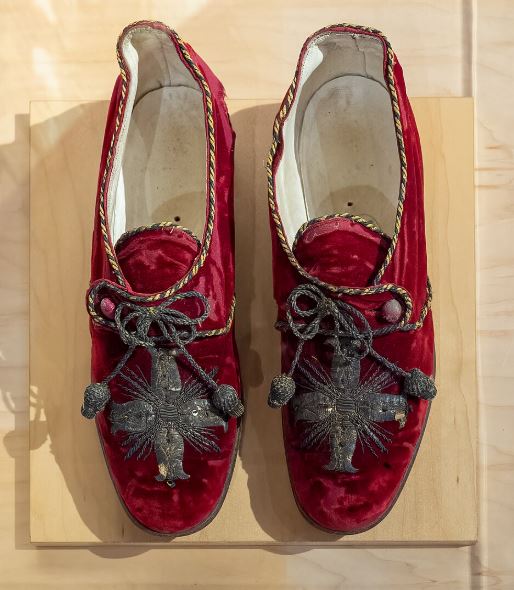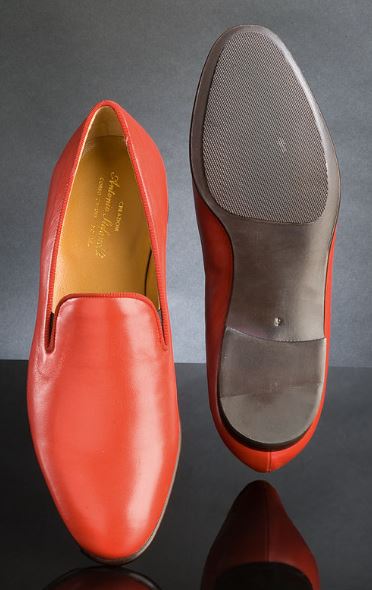Papal Shoes: Why do Popes Wear Red Shoes?
Symbolism of Papal Shoes
The red footwear traditionally worn by the pope holds deep symbolic significance within the Roman Catholic Church. These red shoes, designed for use outside, are distinct from the papal slippers worn indoors or the liturgical sandals typically worn by bishops. Their crimson color is not arbitrary; it is meant to represent the blood of countless Christian martyrs who gave their lives in devotion and faith. The symbolism extends further, linking the red hue to Christ’s passion and crucifixion, particularly the wounds inflicted upon his feet. For centuries, this rich color has stood as a testament to sacrifice, divine love, and unwavering commitment to the teachings of Jesus Christ.
Additionally, the red shoes symbolize the pope’s humility and his submission to the authority of Christ. The color is also associated with the fervent love of God, particularly highlighted during the Pentecost, when red vestments are worn to commemorate the descent of the Holy Spirit. This tradition connects the pope’s attire to profound spiritual and theological themes central to Catholic belief.

Historical Background
In earlier centuries, it was customary for the pope, like other nobility, to wear slippers made of luxurious fabrics indoors and sturdier leather shoes for outdoor use. The indoor slippers were often crafted from red velvet or silk and richly adorned with gold embroidery and central crosses, signifying both status and sanctity.
The tradition of red footwear dates back many centuries and has persisted through numerous papal reigns. However, a notable shift occurred during the papacy of Pius V in the 16th century. As a Dominican friar, Pius V continued wearing the white habit of his religious order after becoming pope, effectively changing the standard color of papal garments from red to white. Despite this, some elements of the traditional red attire, such as the shoes, camauro (a red cap), mozzetta (a short cape), and cloak, were retained as nods to the Church’s enduring legacy.

Mid-20th Century Developments
The use and appearance of papal shoes underwent several changes starting in the mid-20th century. Prior to 1969, popes and bishops alike wore liturgical sandals during Mass, with the color of the footwear adjusted to align with the liturgical calendar. The red outdoor papal shoes were typically crafted from Moroccan leather and decorated with a wide gold cross. Historically, this cross extended from the upper part of the shoe down to the sole, though in the 1700s, the design was modified to feature a shorter, more discreet version.
Pope John XXIII, who ascended to the papacy in 1958, introduced gold buckles to the papal shoes, aligning their style with that worn by cardinals outside Rome. This design choice marked a subtle return to opulence. However, this direction was reversed by his successor, Pope Paul VI. Seeking a more modest and modern image, Paul VI removed the decorative gold cross and eliminated the tradition of kissing the papal foot. By 1969, he had entirely done away with the use of buckles on ecclesiastical footwear, a custom that had long been part of the Papal Court’s formal dress code. Additionally, Paul VI discontinued the use of the ornate indoor slippers and the white Paschal mozzetta and shoes worn during Easter season. Throughout the remainder of his pontificate, he favored simple red leather shoes devoid of embellishment.
Transitions in Papal Footwear
Pope John Paul I, who served for a brief 33 days, continued the tradition of wearing the unadorned red leather shoes. His successor, Pope John Paul II, began his pontificate wearing red shoes but later opted for a more subdued burgundy shade. This marked a period of gradual departure from longstanding papal fashion customs. Despite the shift in daily wear, all three of these pontiffs—Paul VI, John Paul I, and John Paul II—were laid to rest in the traditional red papal shoes, signifying a return to custom at life’s end.
Benedict XVI and a Return to Tradition
In contrast to his immediate predecessors, Pope Benedict XVI showed a keen interest in reviving certain papal traditions, including footwear. He brought back the red papal shoes as a visible link to historical papal identity. These shoes were specially made by Adriano Stefanelli, a skilled Italian cobbler from Novara, who became known for crafting the pope’s elegant, custom footwear. Benedict XVI also reintroduced the white Paschal mozzetta made of damask silk, a vestment traditionally paired with white slippers, thereby signaling his appreciation for liturgical symbolism and historical continuity.
Benedict’s decision to restore these traditions was seen by many as a reaffirmation of the Church’s rich heritage, an intentional move to reconnect modern papal representation with time-honored symbols.

Pope Francis and Modern Simplicity
When Pope Francis assumed the papacy, he opted for a markedly different approach. Known for his emphasis on humility and accessibility, Francis chose to wear simple black shoes, distancing himself from the regal imagery of red papal footwear. His choice reflects his pastoral priorities and his desire to present an image of the papacy that emphasizes service over grandeur.
By rejecting ornate vestments and accessories, Francis underscores his commitment to the poor and marginalized, consistent with his Jesuit background. His black shoes serve as a visual metaphor for his papal philosophy: grounded, unpretentious, and close to the people.
Conclusion
The evolution of papal footwear offers a compelling glimpse into the shifting values and aesthetic sensibilities of the Roman Catholic Church. While the red papal shoes have symbolized martyrdom, divine love, and apostolic tradition, their use has fluctuated according to the personal convictions and theological priorities of successive popes.
From the richly adorned velvet slippers of old to the understated leather of recent decades, these shoes do more than cover the feet of the pontiff—they reflect the living history of the Church itself. Whether through restoration, revision, or rejection of tradition, each pope’s choice in footwear continues to speak volumes about their vision for the Church and their place within its storied lineage.

Frequently Asked Questions: Understanding the Tradition of Papal Shoes
What are papal shoes?
Papal shoes are red leather footwear traditionally worn by the Pope during outdoor appearances.
How are papal shoes different from other ecclesiastical footwear?
They are distinct from indoor papal slippers and episcopal sandals, which are used during liturgical functions.
Why is the color red significant for papal shoes?
Red symbolizes the blood of Christian martyrs and Christ’s sacrifice, as well as divine love and authority.
Did the Pope always wear red shoes?
Yes, though styles and ornamentation have changed over centuries, the red color has remained largely consistent.

What did papal indoor slippers look like historically?
They were made from red velvet or silk and featured gold embroidery, often with a central gold cross.
When did the Pope’s garments become predominantly white?
Pope Pius V, a Dominican, continued wearing his order’s white robes in the 16th century, setting a lasting precedent.
What materials were used for traditional papal outdoor shoes?
They were typically crafted from red Morocco leather with gold braiding or crosses as decorative elements.
When were gold buckles introduced and later removed?
Pope John XXIII added gold buckles in the 1950s, but Pope Paul VI removed them in 1969 along with other formal elements.
Which Popes continued using the red shoes tradition?
Popes John Paul I and early John Paul II followed the red shoe tradition before changes in style were introduced.
Who revived the red papal shoes in recent times?
Pope Benedict XVI brought back the red shoes and had them custom-made by Italian cobbler Adriano Stefanelli.
What style change did Pope Francis make regarding footwear?
Pope Francis opted for simple black shoes, moving away from the traditional red.
Are red papal shoes still used today?
While the tradition remains symbolic, the current Pope does not wear them, showing a more modest approach to papal dress.







